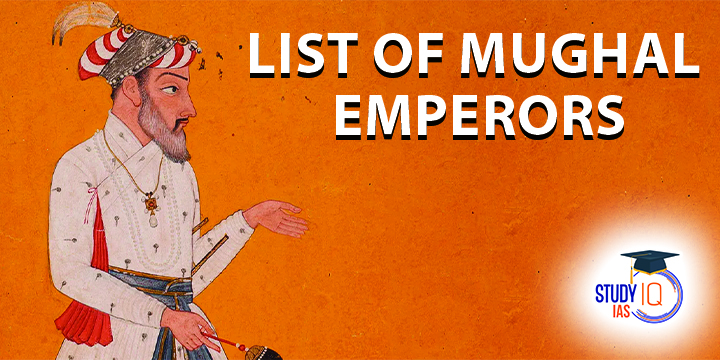Table of Contents
The Mughal Empire, one of the most influential and enduring empires in Indian history, spanned over three centuries. It significantly shaped the subcontinent’s politics, culture, and architecture. This article provides a comprehensive timeline of key events and rulers of the Mughal Empire, highlighting its evolution from its inception to its decline.
Mughal Emperors
Between the middle of the 1500s and the beginning of the 1700s, the Mughal Empire ruled over almost the entire Indian subcontinent. It extended from the northern Afghanistan, Kashmir, and Indus River Basin boundaries in the north to the highlands that are now Assam and Bangladesh in the east, down to the Deccan Plateau uplands in the south.
Mughal Empire
The Mughal Empire was a powerful and influential empire that ruled over much of South Asia from the 16th to the 18th centuries. The empire was founded by Babur, a descendant of the Timurid and Mongol conqueror Timur, and his successors expanded the empire to its greatest extent under Akbar the Great. The Mughals were known for their patronage of the arts, their architectural achievements, and their effective administration.
On April 20, 1526, Babur established his kingdom after defeating Ibrahim Lodi in the first battle of Panipat (1526). However, the kingdom’s decline began with the sixth emperor Aurangzeb, and it was finally overthrown on September 21, 1857, as a result of the Revolt of 1857. The last emperor of the Mughal Empire was Bahadur Shah II.
We’re now on WhatsApp. Click to Join
List of Mughal Emperors in Order (1526-1857)
Here is the complete List of the Mughal Emperors ruled in India from 1526 to 1857.
| Emperor | Full Name | Birth | Death |
|---|---|---|---|
|
Babur
|
Zahir-ud-din Muhammad
|
14th February 1483
|
26 December 1530
|
|
Humayun
|
Nasir-ud-din Muhammad Humayun
|
6th March 1508
|
27 January 1556
|
|
Akbar
|
Jalal-ud-din Muhammad Akbar
|
14th October 1542
|
27th October 1605
|
|
Jahangir
|
Nur-ud-din Muhammad Salim
|
20th September 1569
|
28th October 1627
|
|
Shah-Jahan
|
Shahab-ud-din Muhammad khurram
|
5th January 1592
|
22nd January 1666
|
|
Alamgir I
|
Muhy-ud-din Muhammad Aurangzeb
|
4th November 1618
|
3rd March 1707
|
|
Bahadur Shah
|
Qutb-ud-din Muhammad Mu’azzam shah Alam
|
14th October 1643
|
27th February 1712
|
|
Jahandar Shah
|
Mu’izz-ud-din Jahandar shah Bahadur
|
9th may 1661
|
12th February 1713
|
|
Farrukhsiyar
|
Farrukhsiyar
|
20th August 1685
|
29th April 1719
|
|
Rafi ud-Darajat
|
Rafi ud-Darajat
|
30th November 1699
|
9th June 1719
|
|
Shah Jahan II
|
Rafi ud-Daulah
|
June 1696
|
19 September 1719
|
|
Muhammad Shah
|
Roshan Akhtar Bahadur
|
17th August 1702
|
26th April 1748
|
|
Ahmad Shah Bahadur
|
Ahmad Shah Bahadur
|
23rd December 1725
|
1st January 1775
|
|
Alamgir II
|
Aziz-ud-din
|
6th June 1699
|
29 November 1759
|
|
Shah Jahan III
|
Muhi-ul-millat
|
1711
|
1772
|
|
Shah Alam II
|
Ali Gauhar
|
25th June 1728
|
19th November 1806
|
|
Muhammad shah Bahadur Jahan IV
|
Bidar Bakhat
|
1749
|
1790
|
|
Akbar Shah II
|
Mirza Akbar
|
22nd April 1760
|
28th September 1837
|
|
Bahadur Shah II
|
Abu Zafar Sirajuddin Muhammad Bahadur Shah Zafar
|
24th October 1775
|
7th November 1862
|
About Mughal Empire Rulers Timeline
Babur, Humayun, Akbar, Jahangir, Shah Jahan, and Aurangzeb were the greater Mughal emperors of the Mughal dynasty who transformed the face of India with their different rules and policies along with their political and intellectual prowess. After Aurangzeb’s reign, the empire went into continued decline due to the unwillingness and lack of leadership qualities among his immediate successors. We are providing you with a brief introduction to every Mughal Emperor.
Babur (1526–1530)
Babur was the founder of the Mughal Empire who defeated Ibrahim Lodi in the Battle of Panipat in AD 1526 and established their empire in India. He brought gunpowder to India. He is well known for their battles which were fought in India with Rana Sanga ( also known as Sangram Singh) at the Battle of Khanwa (AD 1527), Medini Rai of Chenderi at the Battle of Chanderi (AD 1528) and Mahmud Lodi at the Battle of Ghagra (AD 1529). In the Turkish language, he wrote Tuzuk-i-Baburi.
Humayun (1530–1540 & 1555–1556)
Humayun was the son of Babur who fought two battles i.e., the Battle of Chausa (AD 1539) and the Battle of Kannauj (AD 1540) with Sher Shah Suri and was ultimately defeated by him. After spending 15 years in exile, Humayun returned to India in 1555 with the support of his officer Bairam Khan. In 1556 AD, Humayun died after falling down the stairs of his library building. Gulbadan Begum, his half-sister, wrote Humayun-nama.
Akbar (1556–1605)
Akbar was the third Mughal emperor, crowned by Humayun’s officer Bairam Khan when he was 13 years old. With Bairam Khan’s help, he defeated Hemu at the Second Battle of Panipat (AD 1556). He conquered Malwa, Gujarat, Chittor, Ranthambore and Kalinjar, Mewar, Kashmir, Sindh, Asirgarh etc.
In Fatehpur Sikri, after Akbar’s conquest of Gujarat in AD 1572, the Buland Darwaza was built. Through his finance minister Raja Todar Mal, he established a land revenue system known as the Todar Mal Bandobast or Zabti system. To organise the army and nobles, he also developed the Mansabdari System (Rank-holder system). Todar Mal, Abul Fazal, Faizi, Birbal, Tansen, Abdur Rahim Khan-i-Khana, Mullah-do-Pyaza, Raja Man Singh, and Fakir Aziao-Din were the Navratnas of the Akbar’s court.
Jahangir (1605–1627)
Jahangir was the son of Akbar. Sir Thomas Roe and Captain Hawkins visited the Mughal court during Jahangir’s reign. He executed Arjun Dev, the fifth Sikh Guru. Zanjir-i-Adal was established by Jahangir at the Agra Fort for those seeking royal justice. His biggest political blunder was losing Kandahar up to Persia in AD 1622. Abdul Hassan, Ustad Mansur, and Bishandas were some of the well-known painters in Jahangir’s court.
Shah Jahan (1627–1658)
Shah Jahan was the son of Jahangir. Shah Jahan built the Taj Mahal, one of the Seven Wonders of the World, Mughal architecture was at its pinnacle during his time. Along with the Taj Mahal, Shah Jahan also constructed the Red Fort and Jama Masjid in Delhi, the Moti Mahal in Agra, and the Jama Darwaza in Agra. The Mughal Empire’s “Golden Age” was considered under Shah Jahan’s rule. His court was visited by an Italian adventurer Manucci and two Frenchmen named Bernier and Tavernier.
Aurangzeb (1658–1707)
Aurangzeb, the last significant Mughal emperor and the son of Shah Jahan won the Mughal throne following a bloody succession struggle with his brothers Dara Shikoh, Shuja, and Murad. In AD 1664 or 1666, he issued a Royal Firman against Sati and executed those who ordered widows to be burned to death. He was also known as Zinda Pir. During his reign, the conquests of the Mughal empire peaked. From Kashmir in the north to Jinji in the south and from the Hindukush in the west to Chittagong in the east, Aurangzeb’s empire spanned vast. In AD 1675, Aurangzeb beheaded Guru Tegh Bahadur, the ninth Sikh Guru.
Bahadur Shah I (1707–1712)
After a conflict over succession with his brothers, Bahadur Shah I, the emperor’s elder son, succeeded his father Aurangazeb, who passed away in 1707. Bahadur Shah I was also known as Muazzam or Shah Alam I. When he took the throne, he was 65 years old and died in 1712.
Later Mughal Emperors List
The later Mughal emperors were mere puppets in the hands of powerful nobles and warlords. The empire continued to decline, and it eventually came to an end with the British East India Company taking control of India in the 19th century.
Jahandar Shah (1712–1713)
The period of kingmakers in India’s history began at this time. Jahandar Shah, one of Bahadur Shah’s less competent sons, gained the throne with the help and support of Zulfiqar Khan, the most significant nobleman at the time. Jizyah was eliminated by him. The Chauth and sardeshmukhi of Deccan were also granted to the Marathas. The implementation of revenue farming, also known as irjarah, was one of his unpopular initiatives.
Furrukhsiyar (1713–1719)
Hussain Ali Khan Barahow and Abdulla Khan, the Saiyyid brothers, supported Farukh Siyar to become an emperor. They were conferred the positions of wazir and mir-bakshi, respectively. This king too suffered the same fate as Jahandar Shah because his ears were poisoned in an effort to harm the nobles. However, in the end, it was the Saiyyid brothers who overthrew him and killed him. Muhammad Shah was their next choice after they crowned two successive emperors, both of whom passed away soon.
Rafi Ul-Darjat (1719)
Rafi Ul-Darjat was the tenth Mughal Emperor who succeeded Furrukhsiyar. The Syed Brothers named him Badshah. He ruled for a very short time period.
Rafi Ud-Daulat (1719)
Rafi Ul-Darjat was the 11th Mughal Emperor who succeeded Rafi Ul-Darjat. He ruled the Mughal empire in 1719 for a very brief time period.
Muhammad Ibrahim (1720)
Muhammad Ibrahim was the brother of Rafi Ul-Darjat. At the urging of the Syed Brothers, he attempted to seize the throne in an effort to remove emperor Muhammad Shah.
Muhammad Shah (1719–1748)
Muhammad Shah was also called as Rangeela. Nadir Shah invaded Delhi while Muhammad Shah was in power and he plundered the city. The Peacock Throne was also taken by him. Nadir Shah’s invasion caused the Mughal Empire to quickly fall apart, and independent kingdoms such as Bengal, Awadh, and Hyderabad broke themselves away from the Mughal Empire.
Ahmad Shah Bahadur (1748–1754)
Ahmad Shah Bahadur was the son of Muhammad Shah. Safdarjung, the minister of Ahmad Shah Bahadur was responsible for starting the Mughal Civil War. The Maratha Confederacy defeated him in Sikandarabad. When Nadir Shah’s general Ahmed Shah Abdali marched toward Delhi, the Mughals ceased Multan and Punjab.
Alamgir II (1754–1759)
Alamgir II was the 15th Mughal emperor in India. He was the son of Jahandar Shah. A conspiracy planned by Sadashivrao Bhau, a Maratha ally of Imad-Ul-Mulk, led to his assassination.
Read about: Decline of Mughal Empire
Shah Jahan III (1759-1760)
Shah Jahan III was the 16th Mughal emperor in India. After the Third Battle of Panipat, Prince Mirza Jawan Bakht overthrew him.
Shah Alam II (1760–1806)
Shah Alam II was the 17th Mughal Emperor in India. He was the son of Alamgir II. He was also known as Ali Gohar or Ali Gauhar. He is regarded as one of the last powerful Mughal Emperors since he is known to have fought in the Battle of Buxar (1764) against the British East India Company and rebuilt the Mughal Army under Mirza Najaf Khan.
Akbar Shah II (1806–1837)
Akbar Shah II was the son of Shah Alam II. He appointed Mir Fateh Ali Khan Talpur as the new Nawab of Sindh. His emperor’s name was removed from the official coins while being under British protection following a brief conflict with the British East India Company.
Bahadur Shah II (1837–1857)
Bahadur Shah II reigned as the last Mughal Emperor. After the Revolt of 1857, the British overthrew him and sent him into exile in Burma.
Conclusion
The Mughal Empire’s influence on India’s political, cultural, and social landscape was profound and lasting. From its rise under Babur to its eventual decline under Bahadur Shah II, the empire played a crucial role in shaping the history of the Indian subcontinent. Understanding the Mughal era provides valuable insights into the complexities of India’s historical development and the evolution of its political and cultural identity.


 Revival of Machilipatnam Port in Andhra ...
Revival of Machilipatnam Port in Andhra ...
 Nagari Pracharini Sabha Revival: Backgro...
Nagari Pracharini Sabha Revival: Backgro...
 Ryotwari System in India, Features, Impa...
Ryotwari System in India, Features, Impa...





















